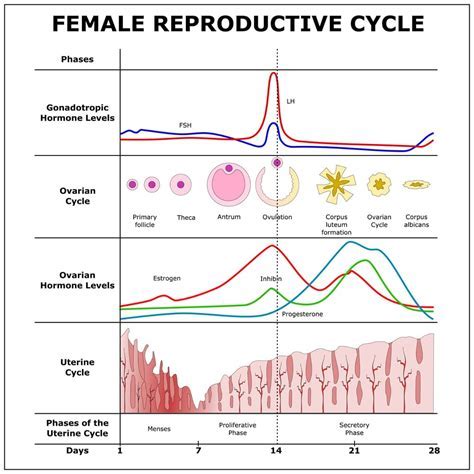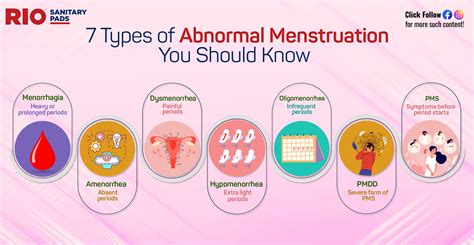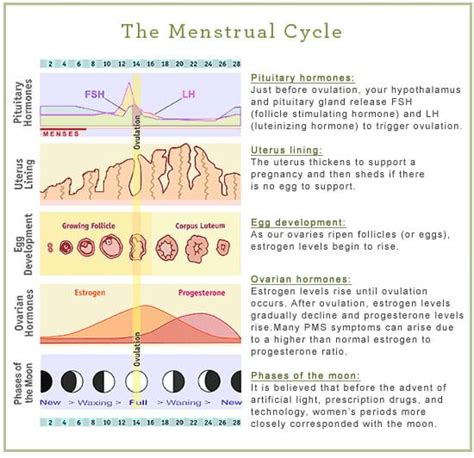In the intricate tapestry of a woman's body, there lies a profound phenomenon that has both fascinated and perplexed humanity for centuries. A mysterious cascade of life-giving fluid, known by the name of menstrual blood, flows from the depths of a woman's core, bringing with it a multitude of emotions, sensations, and untold stories. The enigmatic nature of this bodily phenomenon has sparked countless attempts to unravel its meaning and understand its significance in the grand symphony of life.
Like a potent elixir, menstrual blood carries within it the essence of transformation, renewal, and creation. Beyond the realm of mere biology, it holds a sacred space in the spiritual and cultural heritage of civilizations throughout time. Acknowledging the duality of its existence - both revered and stigmatized - is crucial in comprehending the profound connection that menstrual blood holds with the feminine essence and the cycles of nature itself.
Embracing the ebbs and flows of life, the monthly menstrual cycle serves as a whispered conversation between a woman and her body. Within the deep recesses of the womb, a symphony of hormones orchestrates a carefully choreographed dance, culminating in the release of this sacred, crimson flow. It is a silent declaration of fertility, a poignant reminder of the potential to create life, and a testament to the cyclical nature of existence.
The Fundamentals of Menstruation

Menstruation, often referred to as a woman's monthly cycle, is a natural biological process unique to females of reproductive age. It is a complex physiological phenomenon that involves the shedding of the uterine lining, resulting in the discharge of blood and tissue through the vagina. This fundamental aspect of a woman's reproductive system plays a crucial role in facilitating the potential for pregnancy and maintaining overall reproductive health.
During each menstrual cycle, a series of intricate hormonal changes occur in a woman's body, ultimately leading to the release of an egg from the ovaries. If fertilization does not occur, the thickened uterine lining, built up in preparation for potential pregnancy, is no longer needed. The body responds by initiating menstruation, where the lining is shed and eliminated from the body along with blood.
Average menstrual cycles typically last between 28 to 32 days, although variations are common. While menstruation is often associated with blood, it is important to recognize that the menstrual flow consists of a combination of blood, uterine tissue, and other fluids. The color, consistency, and duration of menstrual blood can vary from woman to woman and even from cycle to cycle.
Understanding the basics of menstruation is essential for individuals of all genders, as it provides insight into the reproductive processes and challenges experienced by women. It fosters empathy and supports open dialogue about menstruation, helping to dispel myths and misconceptions surrounding this natural bodily function.
| Key Points: |
|---|
| - Menstruation is a natural biological process exclusive to females of reproductive age. |
| - It involves the shedding of the uterine lining, resulting in the discharge of blood, tissue, and other fluids. |
| - Hormonal changes trigger menstruation, leading to the elimination of the unnecessary uterine lining. |
| - Menstrual cycles typically last between 28 to 32 days, with individual variations. |
| - Understanding menstruation supports empathy and open dialogue about reproductive health. |
Understanding the Menstrual Cycle: A Key Aspect of Reproductive Health
The menstrual cycle is an essential process that plays a crucial role in reproductive health. It encompasses a series of physiological changes that occur within the female body, resulting in the shedding of the uterine lining and the release of an egg. This intricate cycle involves various hormonal fluctuations, signaling the readiness of the reproductive system for potential fertilization and pregnancy.
Comprehending the menstrual cycle is vital for women as it empowers them to understand their bodies and take charge of their reproductive health. By recognizing the different phases and patterns within the menstrual cycle, individuals can gain insights into their fertility, hormonal balance, and overall well-being. This knowledge allows them to make informed decisions regarding contraception, family planning, and seeking medical attention when necessary.
The menstrual cycle is not just limited to the menstruation phase commonly referred to as a "period." It encompasses distinct stages such as the follicular phase, ovulation, and luteal phase. Each of these phases is characterized by specific hormone levels, which regulate the growth of follicles, the release of the egg, and the preparation of the uterine lining for possible implantation.
Moreover, the menstrual cycle's interplay with reproductive hormones influences various aspects of a woman's health beyond fertility. Hormone levels during different phases can impact mood, energy levels, appetite, and even cognitive abilities. Understanding these connections can help women navigate through these changes more effectively and enhance their overall well-being.
In addition to its individual significance, comprehending the menstrual cycle is also essential for healthcare providers. The information gathered through menstrual cycle tracking can aid in diagnosing and treating reproductive disorders such as polycystic ovary syndrome (PCOS), endometriosis, and irregular periods, among others. It forms the basis for personalized and effective reproductive healthcare interventions.
Therefore, empowering individuals with comprehensive knowledge about the menstrual cycle's mechanics, associated hormones, and potential implications is crucial for their reproductive health and overall well-being. By better understanding the menstrual cycle, women can make informed decisions, seek appropriate medical care, and take proactive steps towards maintaining their reproductive health at different stages of life.
Decoding Menstrual Blood

In this section, we delve into the intricate nature of menstrual blood and unravel its hidden meanings. By examining the significance of this natural bodily process, we aim to shed light on the multifaceted aspects that can be decoded from the crimson flow.
Interpreting the Symbolism
Menstrual blood carries with it more than just physical implications; it is intertwined with symbolism that resonates through different cultures and societies. By understanding the symbolic weight attributed to menstrual blood, we can unravel its deeper meaning and significance.
Exploring Cultural Perspectives
Across different cultures and traditions, menstrual blood is imbued with a myriad of interpretations, ranging from taboos and rituals to spiritual connections and the celebration of womanhood. We explore these perspectives to gain a comprehensive understanding of how menstrual blood is perceived and valued in diverse societies.
The Emotional and Psychological Significance
Beyond its physical aspects, menstrual blood also holds emotional and psychological significance. By delving into the experiences and perceptions of individuals, we unravel the impact of menstrual blood on their mental and emotional well-being, highlighting the unique journey that each person undertakes during this natural process.
Deciphering Health Insights
The characteristics of menstrual blood can provide valuable insights into a woman's overall health. By decoding the variations in color, consistency, and flow, we can glean important information about hormonal balance, reproductive health, and potential underlying medical conditions.
Empowering Dialogue and Breaking Stigmas
By decoding menstrual blood and understanding its profound significance, we aim to contribute to the ongoing dialogue surrounding menstruation. Through exploration and education, we hope to challenge societal stigmas and empower individuals to embrace their menstrual cycle as a natural and empowering part of their lives.
Exploring the Composition and Characteristics of Menstrual Fluid
The study of the components and properties of the monthly discharge experienced by females can provide valuable insight into various aspects of the menstrual cycle and overall reproductive health. By delving into the makeup and attributes of this particular bodily fluid, researchers aim to shed light on the intricacies and significance of menstrual blood.
Colors and Textures: Decoding the Symbolism

Exploring the vast spectrum of colors and textures found in menstrual blood can provide invaluable insights into the intricate workings of the female body and its cyclical nature. By examining these visual elements, we can decipher hidden messages and gain a deeper understanding of our menstrual health.
| Color | Meaning |
|---|---|
| 1. Bright Red | Symbolizes the beginning of the menstrual cycle. It typically indicates a healthy flow and fresh shedding of the uterine lining. |
| 2. Dark Red | Often seen towards the end of the menstrual cycle, this color suggests that the blood has taken longer to leave the body. It is associated with a slower flow and can be an indication of hormonal imbalances. |
| 3. Brown | Signifies older blood that has been in the uterus for a longer duration. This color is commonly observed during the tail end of the menstrual cycle, as the body expels any remaining menstrual fluid. |
| 4. Pink | Commonly found during lighter days of the menstrual flow, pink blood indicates a lower volume of blood or a dilution with cervical mucus. It is often considered normal but may also be associated with hormonal fluctuations. |
| 5. Orange | Uncommon but occasionally observed, orange-colored blood may signify the presence of an infection. It is essential to consult a healthcare professional if this color persists or is accompanied by unusual symptoms. |
| 6. Gray or Black | Absence of bright red color and the presence of gray or black blood may indicate an underlying health issue, such as an infection or miscarriage. Seeking medical advice is crucial in such cases. |
While colors provide valuable insights, the texture of menstrual blood is equally significant. Consistency, thickness, and the presence of clots can offer clues regarding hormonal balance, uterine health, and overall well-being.
In conclusion, familiarizing ourselves with the colors and textures of menstrual blood is a powerful tool for understanding the intricacies of our menstrual cycle. It enables early detection of potential health concerns and fosters a proactive approach towards menstrual health.
Decoding the Various Hues and Textures of Menstrual Flow: Potential Interpretations
Exploring the diverse spectrum of colors and textures exhibited by menstrual blood can provide insightful clues into a person's reproductive health. By deciphering this unique palette, individuals can gain a deeper understanding of potential health indicators and underlying conditions that may warrant attention.
- Abundant Scarlet or Bright Red Blood:
- Pale Pink or Light-Colored Blood:
- Dark Brown or Maroon Blood:
- Grayish or Clay-Like Blood:
- Watery or Thin Blood:
- Thick or Clotted Blood:
This vibrant crimson hue often signifies a healthy and robust menstrual cycle. Generally, it indicates that the flow is fresh, and the shedding of the uterine lining is proceeding as expected.
While a lighter shade of blood may occur at the beginning or end of a period, it can also indicate a lack of nutrient-rich blood. This could potentially arise from various factors, such as hormonal imbalances or nutritional deficiencies.
The presence of darker menstrual blood usually indicates that it has taken longer to exit the body. This could be due to a slower flow or a prolonged exposure to air. However, if accompanied by severe pain or unusual symptoms, it might be wise to consult a healthcare professional.
If menstrual blood exhibits a gray or clay-like appearance, it could be an indication of an infection or possibly a miscarriage. Seeking medical advice is crucial to determine the root cause and ensure appropriate treatment if needed.
Menstrual blood that appears watery or thin might suggest hormonal imbalances, such as low progesterone levels, or the presence of underlying health conditions. Monitoring any accompanying symptoms can assist in identifying potential causes.
Thicker, clotted menstrual blood is a common occurrence for many individuals. However, excessively heavy clotting or the passage of unusually large clots could be indicative of an underlying health issue, such as uterine fibroids or hormonal imbalances, necessitating medical attention.
While interpreting the colors and textures of menstrual blood can offer valuable insights, it is essential to remember that variations can be influenced by various factors, including hormonal fluctuations, medications, and overall menstrual health. It's always advisable to consult a healthcare professional if any concerns arise or if there is a deviation from one's regular menstrual pattern.
Spotting vs. Heavy Flow: Is it Normal?

In the context of the topic "Understanding the Meaning of Menstrual Blood and Its Significance," this section delves into the comparison between spotting and heavy flow during menstruation, aiming to determine whether these variations are considered normal. Instead of comprehending the implications and importance of menstrual blood, we focus on the examination of spotting and heavy flow, exploring whether they fall within the realm of normality.
Spotting refers to the occurrence of light or minimal bleeding during menstruation, often characterized by the presence of small amounts of blood that may be pinkish, brownish, or even red. On the other hand, heavy flow refers to a significant amount of blood being expelled during the menstrual period, sometimes accompanied by the need to change menstrual products frequently. While the menstrual cycle and its patterns can widely vary between individuals, it is essential to differentiate between spotting and heavy flow to determine if they align with what is considered typical or abnormal.
| Spotting | Heavy Flow |
|---|---|
| Light or minimal bleeding | Significant amount of blood |
| Pinkish, brownish, or red color | Typically bright red |
| May require fewer changes of menstrual products | May require frequent changes of menstrual products |
Spotting can occur for various reasons, ranging from hormonal fluctuations to certain medications, underlying health conditions, or even strenuous physical activities. While some instances of spotting may be considered normal, it is important to consult a healthcare professional if it becomes a recurring or bothersome issue. Heavy flow, also known as menorrhagia, can likewise have multiple causes, such as hormonal imbalances, uterine fibroids, polyps, or even certain medical conditions. If heavy flow significantly disrupts daily activities or is accompanied by severe pain, seeking medical advice is advisable to ensure adequate management.
Understanding the distinction between spotting and heavy flow helps individuals recognize whether their menstrual experiences fall within the range of typical or require further investigation. If you have concerns about the nature of your menstrual bleeding, consulting a healthcare provider will provide valuable insights and appropriate guidance.
Distinguishing between normal and abnormal menstrual bleeding patterns
Recognizing the contrast between regular and unusual monthly bleeding patterns:
Understanding the distinction between customary and anomalous menstrual bleeding is crucial for women's health and well-being. Accurately identifying and delineating the various patterns of menstrual blood flow enables individuals to comprehend and address potential complications or concerns that may arise. Differentiating between typical and atypical bleeding patterns empowers women to make informed decisions about their reproductive health and seek appropriate medical attention when necessary.
Normal menstrual bleeding refers to the regular, predictable, and recurring pattern of blood flow that occurs as part of a woman's menstrual cycle. Synonymous with routine or expected bleeding, it symbolizes a healthy reproductive system and hormonal balance. In contrast, abnormal menstrual bleeding encompasses any deviation from the normal pattern in terms of duration, frequency, volume, or consistency of blood flow. Anomaly in menstrual bleeding may manifest as unusually heavy or light flow, prolonged or shortened duration, irregular timing, or presence of clots.
Recognizing abnormal bleeding patterns can aid in the early detection and diagnosis of underlying health conditions. In cases of excessive or prolonged bleeding, it is crucial to rule out potential causes such as hormonal imbalances, uterine fibroids, polyps, or certain medical conditions. Conversely, extremely light or infrequent bleeding could indicate issues like polycystic ovary syndrome (PCOS) or thyroid disorders. Familiarizing oneself with the spectrum of normal and abnormal bleeding patterns is pivotal in safeguarding reproductive health and ensuring timely medical intervention to maintain overall well-being.
Possible Causes of Unusual Menstrual Bleeding

Unusual menstrual bleeding can arise from various factors, leading to deviations from the normal pattern and characteristics of menstrual blood flow. Understanding these potential causes is essential in recognizing and addressing abnormal menstrual bleeding. This section explores some of the possible reasons behind abnormal menstrual blood and highlights the importance of identifying and addressing these underlying causes.
| Possible Causes | Description |
|---|---|
| Hormonal Imbalances | Disturbances in hormone levels, such as excessive or insufficient estrogen or progesterone, can affect the thickness of the uterine lining and result in alterations in menstrual blood flow. |
| Uterine Fibroids | Benign growths in the uterus called fibroids can cause heavy or prolonged menstrual bleeding due to their impact on the uterine lining. |
| Endometriosis | Endometriosis, a condition where the tissue lining the uterus grows outside the uterus, can lead to abnormal menstrual bleeding, often accompanied by severe pain. |
| Polycystic Ovary Syndrome (PCOS) | PCOS, a hormonal disorder, can cause irregular menstrual cycles and abnormal bleeding due to anovulation (lack of ovulation) and hormonal imbalances. |
| Thyroid Dysfunction | An underactive or overactive thyroid gland can disrupt normal menstrual patterns, leading to abnormal bleeding. |
| Certain Medications | Some medications, such as anticoagulants or hormonal contraceptives, can affect the consistency and quantity of menstrual blood. |
| Structural Abnormalities | Various anatomical abnormalities within the reproductive system, such as uterine polyps or cervical stenosis, can contribute to abnormal menstrual bleeding. |
| Sexually Transmitted Infections (STIs) | Certain STIs, such as chlamydia or gonorrhea, can cause inflammation in the reproductive organs and result in unusual menstrual bleeding. |
Identifying the underlying cause(s) of abnormal menstrual bleeding is crucial for appropriate diagnosis and management. Consulting with a healthcare professional is recommended to determine the specific cause and develop an individualized treatment plan.
Exploring underlying medical conditions that can impact the appearance of menstrual flow
Delving into the realm of menstrual health involves understanding the multifaceted factors that can influence the appearance of menstrual blood. While menstruation is a natural bodily process for individuals with reproductive systems, there are various medical conditions that can affect the appearance of menstrual flow.
One aspect to consider is the color of menstrual blood, which can range from bright red to dark brown. These variations in color can be indicative of underlying medical conditions. For instance, lighter colored menstrual blood may suggest changes in hormone levels or the presence of certain reproductive disorders such as polycystic ovary syndrome (PCOS). On the other hand, darker colored menstrual blood might indicate the shedding of older uterine lining or the presence of endometriosis.
Another factor that can impact menstrual blood appearance is its consistency or texture. Menstrual blood can range from being thin and watery to thick and clotted. Excessive clots or a consistently thick consistency might signify the presence of conditions such as fibroids or adenomyosis, which can affect the uterine lining and lead to abnormal bleeding patterns.
In addition to color and consistency, the volume or amount of menstrual blood can also provide insights into potential underlying medical conditions. For example, excessive or prolonged bleeding (known as menorrhagia) could be an indication of uterine fibroids, hormonal imbalances, or even certain bleeding disorders such as von Willebrand disease.
By exploring these underlying medical conditions that can affect the appearance of menstrual blood, individuals can gain a better understanding of their menstrual health and seek appropriate medical attention when necessary. It is important to remember that variations in menstrual blood appearance are not always cause for alarm, but it is crucial to be aware of persistent changes that may signify an underlying condition.
Indicators of a Healthy Menstrual Cycle

In this section, we will explore the various signals that indicate a well-functioning menstrual cycle, without directly referencing the understanding, meaning, or significance of menstrual blood. Understanding the patterns and signs of a healthy cycle is crucial for maintaining reproductive health.
Consistent Duration: A typical menstrual cycle lasts between 28 to 35 days. Having regular cycles with consistent durations is a positive indication of a healthy reproductive system. It demonstrates that the hormonal balance and ovulation process are functioning effectively.
Predictable Flow: A healthy menstrual cycle usually involves a predictable flow pattern. This means that the flow starts moderately, becomes heavier for a few days, and then tapers off towards the end of the cycle. A consistent flow pattern, accompanied by minimal clotting and an absence of extreme pain, suggests a balanced hormonal environment.
No Excessive Bleeding: Excessive bleeding, also known as menorrhagia, is not typical in a healthy menstrual cycle. While individual experiences may vary, heavy and prolonged bleeding can indicate hormonal imbalances or underlying health conditions that require medical attention. Understanding what is considered normal and seeking support when there is excessive bleeding is vital for maintaining reproductive health.
Pain Management: While some discomfort or cramping during menstruation is common, severe pain during periods, known as dysmenorrhea, may indicate an underlying issue. A healthy menstrual cycle allows for manageable discomfort with minimal disruption to daily activities. Seeking appropriate pain management options and discussing severe pain with healthcare professionals is important for overall well-being.
Regular Ovulation: Regular ovulation is a crucial aspect of a healthy menstrual cycle. Ovulation is the release of an egg from the ovaries, and its occurrence indicates the proper functioning of the reproductive system. Monitoring ovulation using techniques such as tracking basal body temperature or cervical mucus can provide insights into the regularity of ovulation.
Emotional Well-being: A healthy menstrual cycle not only encompasses physical aspects but also affects emotional well-being. Stable mood fluctuations and minimal emotional disturbances throughout the cycle indicate a healthy hormonal balance. Understanding and managing emotional changes can contribute to a positive overall menstrual experience.
By recognizing these signs, individuals can gain a better understanding of the health of their menstrual cycles and seek appropriate guidance if any concerns arise. It is essential to prioritize reproductive health and ensure the well-being of oneself.
Identifying indicators of a well-functioning reproductive system
In this section, we will explore various indicators that can help us assess the optimal functioning of the reproductive system. By understanding and recognizing these signs, individuals can gain valuable insights into their overall reproductive health and make informed decisions.
A well-functioning reproductive system can be identified through several key indicators. One such indicator is the regularity of menstrual cycles, which refers to the consistent pattern of menstrual bleeding. Another indicator is the duration of menstrual bleeding, which should fall within a healthy range. Additionally, the presence of any unusual or abnormal symptoms, such as severe pain, excessive bleeding, or irregularities in cycle length, may suggest underlying issues within the reproductive system.
Furthermore, the color and consistency of menstrual blood can also provide valuable information about the health of the reproductive system. Ideally, menstrual blood should be a healthy shade of red, indicating an adequate oxygen supply and proper shedding of the uterine lining. Any deviations from this norm, such as extremely light or dark-colored blood, clots, or significant changes in texture, may warrant further investigation.
Another crucial indicator of a well-functioning reproductive system is hormonal balance. Hormonal fluctuations can affect various aspects of the menstrual cycle, including the length, intensity, and symptoms experienced. Therefore, maintaining a harmonious hormonal balance is essential for overall reproductive health.
Additionally, tracking basal body temperature (BBT) can provide valuable insights into the functioning of the reproductive system. BBT refers to the lowest temperature recorded during rest and can vary throughout the menstrual cycle. A consistent and predictable pattern of BBT fluctuations can indicate a healthy ovulation process and overall reproductive functioning.
Lastly, maintaining good overall physical and emotional well-being is vital for a well-functioning reproductive system. Factors such as adequate sleep, a balanced diet, stress management, and regular exercise contribute to optimal reproductive health.
| Indicators of a Well-Functioning Reproductive System |
|---|
| Regular menstrual cycles |
| Healthy duration of menstrual bleeding |
| Absence of unusual or abnormal symptoms |
| Healthy color and consistency of menstrual blood |
| Maintaining hormonal balance |
| Consistent and predictable basal body temperature (BBT) fluctuations |
| Overall physical and emotional well-being |
FAQ
What is menstrual blood?
Menstrual blood is the blood that is released from the uterus through the vagina during a woman's menstrual cycle.
Is menstrual blood a sign of a health problem?
No, menstrual blood is a natural bodily function and typically indicates a healthy reproductive system. However, changes in color, consistency, or odor may be worth discussing with a healthcare provider.
What does the color of menstrual blood indicate?
The color of menstrual blood can vary from bright red to dark brown. Bright red blood is generally newer and indicates a healthy flow. Darker blood may simply be older blood that took longer to exit the body.
Can the amount of menstrual blood change from cycle to cycle?
Yes, the amount of menstrual blood can vary from cycle to cycle. Factors such as hormone levels, stress, and underlying health conditions can all impact the volume of blood released during menstruation.
Is there any cultural significance associated with menstrual blood?
Yes, in some cultures, menstrual blood is seen as a symbol of fertility, transformation, and power. It can also have ritualistic and spiritual meanings in certain societies.
What is the significance of menstrual blood?
Menstrual blood is significant because it is the shedding of the thickened lining of the uterus, which occurs every month in women of reproductive age who are not pregnant. The presence or absence of menstrual blood can indicate fertility and the hormonal balance within a woman's body.
Is the color and consistency of menstrual blood important?
Yes, the color and consistency of menstrual blood can provide important information about a woman's menstrual health. Normally, menstrual blood is bright red or dark red, but variations in color, such as pink or brown, can indicate different issues. Similarly, a heavy flow or clots may be a sign of certain conditions that require medical attention.




